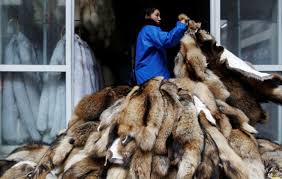A recent investigation conducted by the animal protection group Humane Society International (HSI) has uncovered concerning conditions at fur farms in China, highlighting the potential risk of disease transmission from animals to humans. The study, conducted at five fur farms in China’s northern Hebei and Liaoning provinces towards the end of 2023, revealed intensive farming practices and overcrowded conditions that could facilitate the spread of viruses.
According to HSI, each of the investigated fur farms housed between 2,000 and 4,000 animals, including foxes, raccoon dogs, and mink, in close proximity to poultry. The high stocking density and cramped living conditions observed at these facilities create an environment ripe for the rapid transmission of viruses between animals and potentially to humans, warned Alastair MacMillan, a visiting professor at Surrey University’s Veterinary School.
“The rapid circulation and mixing of different strains of virus from animal to animal facilitates their adaptation to a mammalian host, the development of mutant strains of concern, and a greater likelihood of a threat of human infection,” MacMillan explained.
Despite the alarming findings, China’s Ministry of Agriculture and Rural Affairs did not respond to requests for comment regarding the conditions on the fur farms and the associated risk of disease spread. Photos and footage obtained by HSI depicted animals confined in small, wire-mesh cages, with many showing signs of psychological distress such as repetitive pacing—an indication of poor welfare conditions, according to veterinary experts.
Peter Li, HSI’s China policy expert, expressed concern over the discrepancy between the grim reality of fur farming and the glamorous image often portrayed by the fur trade. “Mentally disturbed animals, piles of animal filth, barren cages, and worrying zoonotic disease is in stark contrast to the glamorous image the fur trade tries to portray,” Li remarked.
While China’s fur production has seen a significant decline in recent years, with a 50% decrease from 2022 to 2023 and nearly a 90% drop over the past decade, there remains a robust demand for fur, especially among certain segments of society. Social media platforms such as e-commerce site Xiaohongshu and Weibo continue to feature discussions among users regarding the desirability and practicality of wearing fur for warmth.
The findings of HSI’s investigation underscore the urgent need for improved animal welfare standards and greater oversight of fur farming practices to mitigate the risk of disease transmission and protect both animal and human health.
For more information on the investigation and its implications, refer to HSI’s report on the conditions at Chinese fur farms.












